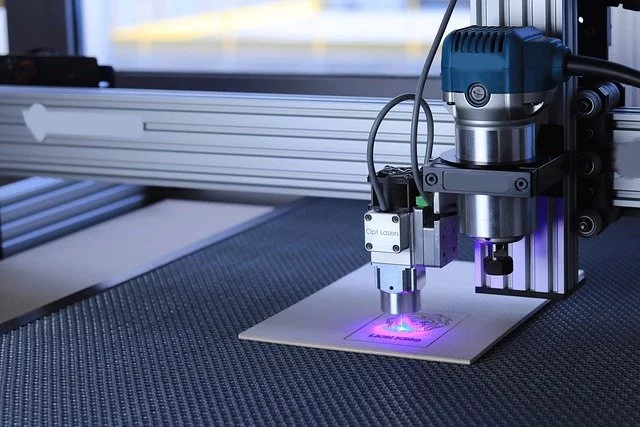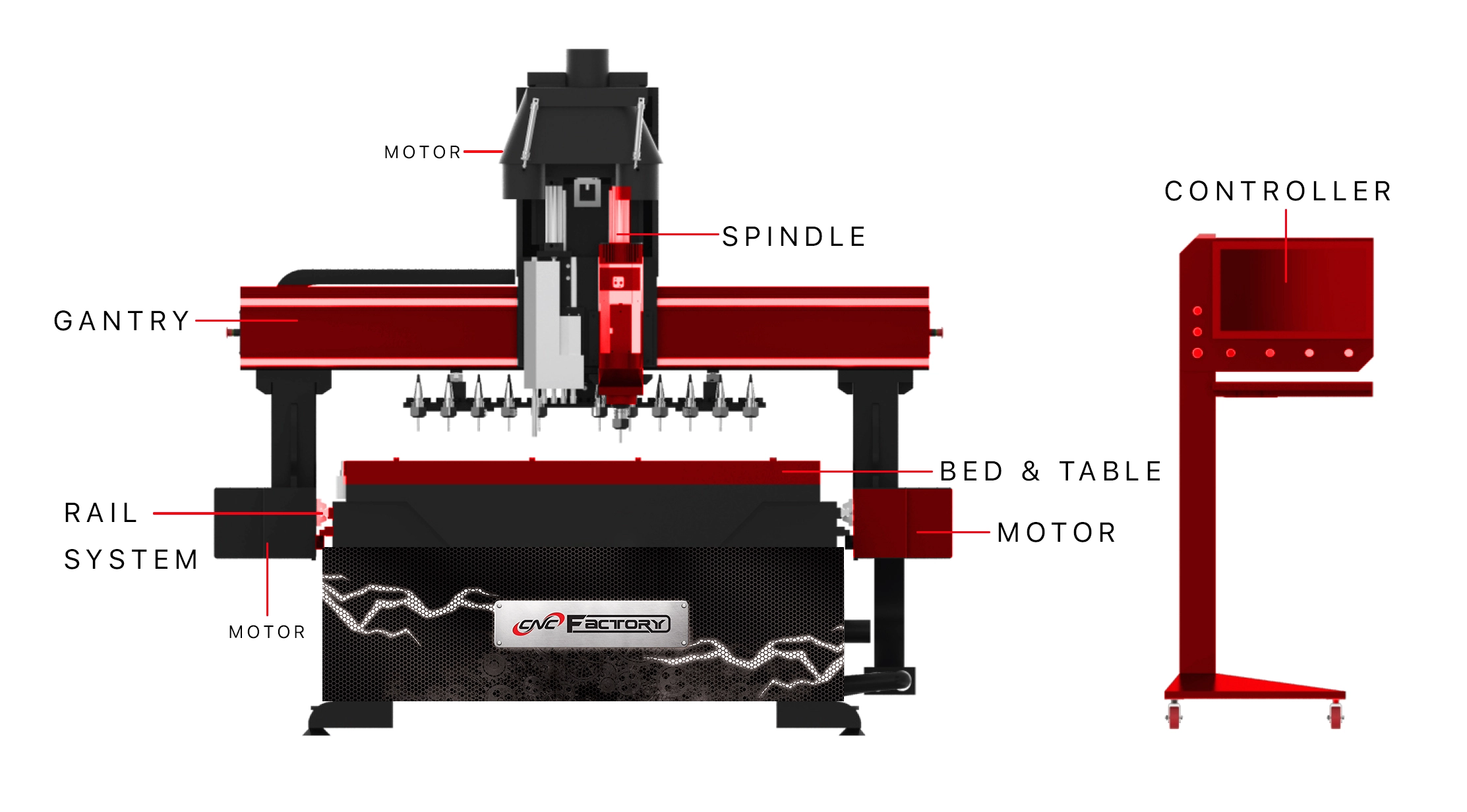What is a laser engraver
A laser engraver is a tool that vaporizes materials into fumes to make permanent, deep marks. The engraving machine features a laser beam that acts as a chisel, adding marks to your item by removing layers from the surface. The laser reaches areas with multiple energy levels to make the high heat required for vaporization.
When choosing a laser marking process, consider the marking’s resistance. This is the capacity to remain legible under harsh conditions. Look at the laser marking speed, and it refers to the marking time that prevents production bottlenecks.
Laser engraving technology, engrave metal workpieces exposed to multiple surface treatments. The material marked also plays a part. Consider the material’s compatibility with the marking method.

Metal engraving works with steel and aluminum: including anodized and die-casting aluminum. A competitive engraver engraves 2D codes. It keeps high readability rates after post-process treatments. These include shot blasting, e-coating, and heat treatments, dealing with complex traceability issues.
Sometimes there is no need for resistant identifiers when laser etching. It is becoming the option because it is a high-speed method that does not rely more on ablation. Laser etch materials, including steel, aluminum, anodized aluminum, lead, magnesium, and zinc. Another method called laser annealing marks metals like stainless steel.
Uses of a laser engraver
Awards and Trophies
Laser engraving makes clean, shaped carvings onto a surface. Award and trophy makers rely on laser engraving for glass, metal, and wood, cutting shapes into sturdy rubber to create custom stamps. The stamps work well for award certificates, mass signatures, letterheads, and other decorative markings.
Barcode Creation
Laser engravers make items with barcodes and industrial equipment components. Barcodes are printed on paper or directly onto the item. Items with specific characteristics do not take these standard barcodes. Engravers cut barcodes into the items to avoid adhesive-resistant surfaces and heavy-duty use problems.
Decorative items
What separates engraved jewelry from the rest is engraving dates or phrases into the surface. Manufacturers offer options for decorations on items depending on one’s choices. Engraving works on jewelry, glassware, keychains, and bottle openers.
Medical and Electronic Components
Medical and electronic parts need easy and precise identification. It is a laser engraver that makes parts identifiable. A manufacturer has to choose to mark them using laser engraving. They are for legibility, permanent lettering, and simple mass marking.
Signage
Laser engraving is for durable signage on engraving maps, directions, and other sign contents. Signage is durable and withstands harsh weather conditions. It increases legibility due to the depth of the lettering. CNC systems use precise, automated cutting and engraving equipment for mass production. A high level of production is what you get.
What is a CNC router?
A CNC router is a handheld router used for cutting multiple materials. It cuts through steel, wood, aluminum, plastic, and foam. It is like a CNC mill as they both use a computer numerical control to route tool paths that allow the machine to start performing the task.
CNC routers decrease waste and increase production. They are fast and come in different sizes. Industrial CNC routers are big, and they use a large amount of space. There are desktop routers that use less space.
They are smaller to the extent that they use a desk. The only disadvantage with the desktop router is that it is not as powerful as the industrial router. It is perfect for home use, and you connect it to your home computer. It uses the software on your computer and programs it to perform specific production functions.
CNC routers are used for woodwork, crafting different materials, and making art pieces. Woodworkers use CNC routers to cut and shape multiple pieces of wood. At some point, I had to use the router to design my rocking chair for the balcony.

The CAD and CAM software helps you control and operate your router. It easily cuts through maple wood for a project. You make cuts at the precise angles of your choice. You use bolts and screws to attach the pieces of wood as you make your item.
CNC routers are for manufacturing centers and homes. I advise you to go for kits that are easy to assemble if you are using the router for private projects at home. With time, innovative routers lessen the burden for you.
Uses of a CNC router
CNC routers are used with two software applications. They come in vertical, horizontal, and perpendicular coordinates. The CAD designs and the CAM translates them into a G-code or M-code program of instructions for the machine.
The CNC machine begins to cut the design. A CNC router can produce:
- door carvings,
- interior and exterior decorations,
- wood panels,
- signboards,
- wooden frames,
- mouldings,
- musical instruments,
- and furniture.
It also works in the thermoforming of plastics by automating the trimming process. CNC routers ensure part repeatability and efficient output for production.
It is for furniture making, sign making, cabinet making, mold making and prototyping, crafts, and art-making and designing.
Similarities
- Precision in designs.
- They both cut or engrave materials.
- Both use the computer.
Differences
- Lasers use heat to cut through wood, whereas routers use a spinning bit.
- Lasers cut two-dimensional shapes, whereas routers cut materials with different depths.
Average Price Comparison
The average price of a Laser engraver is around $500, whereas a CNC router starts from $150. That is an entry-level router for small tasks. That makes the router more affordable than the cutter. Beginners or hobbyists find it easy to use a router when working on a tight budget or testing waters.
Advantages of a laser engraver
- Versatility
- Precise and Reliable.
- Working with a variety of materials.
- Safe
- It produces few waste products.
Disadvantages of a laser engraver
- Energy consumption is not fixed.
- Production rates differ.
Advantages of a CNC router
- Precision and accuracy
- Repeatability
- Ease of use
- Reduced manpower costs
- Improved safety.
Disadvantages of a CNC router
- Noise
- More dust production
When would you use one instead of the other
You can choose a laser engraver over a router when you want permanent, precise engravings. It is perfect for awards, trophies, paper, or even glasses.
You can choose a router over a laser engraver for minimal waste and increased productivity and multiple items in a much shorter amount of time.
- Grain and Sheen: Teak Oil versus Danish Oil Uncovered - January 10, 2024
- The Cherry on Top: Crafting the Perfect Cutting Board - January 9, 2024
- Polyurethane Water-Based vs Oil-Based: Choosing the Right Finish - January 8, 2024